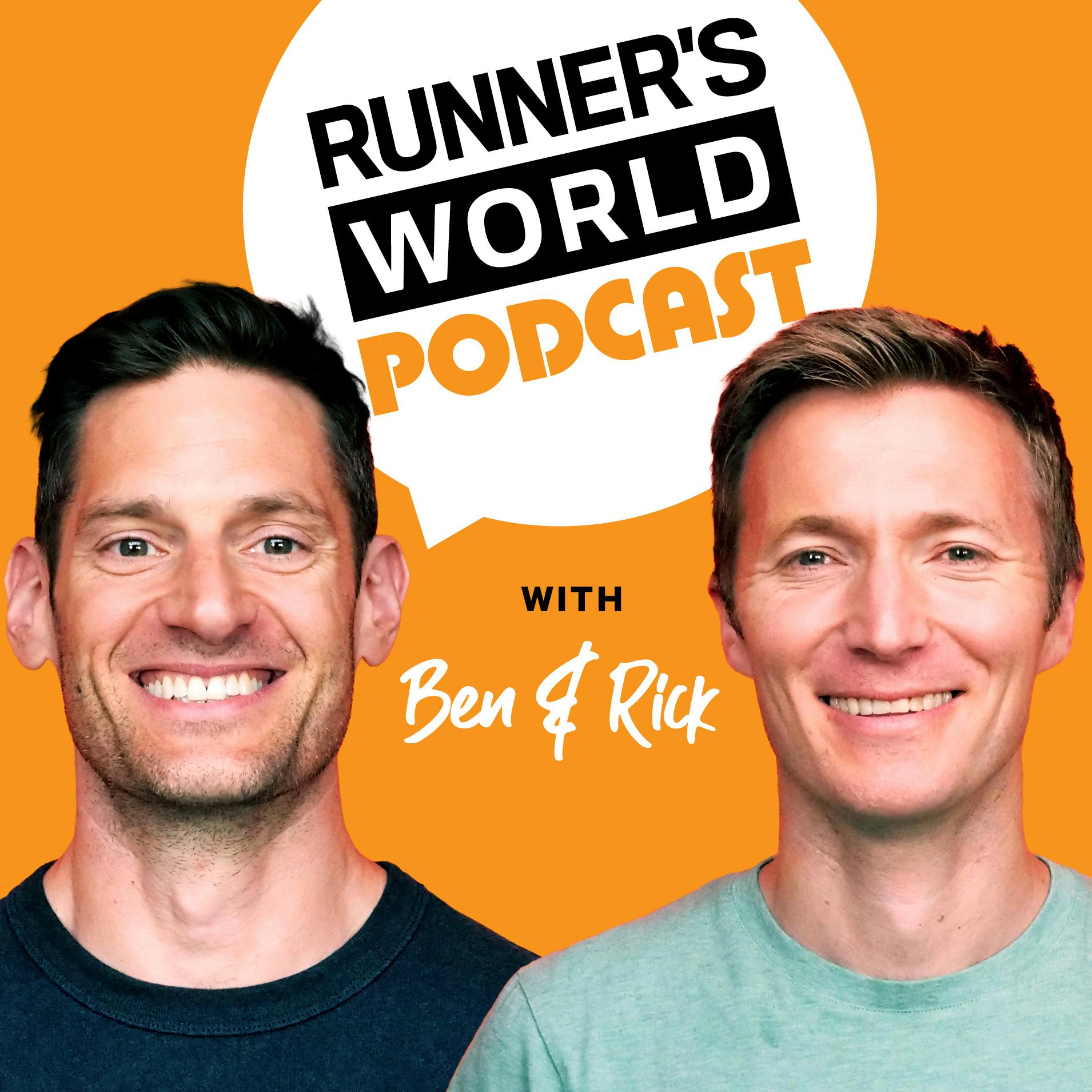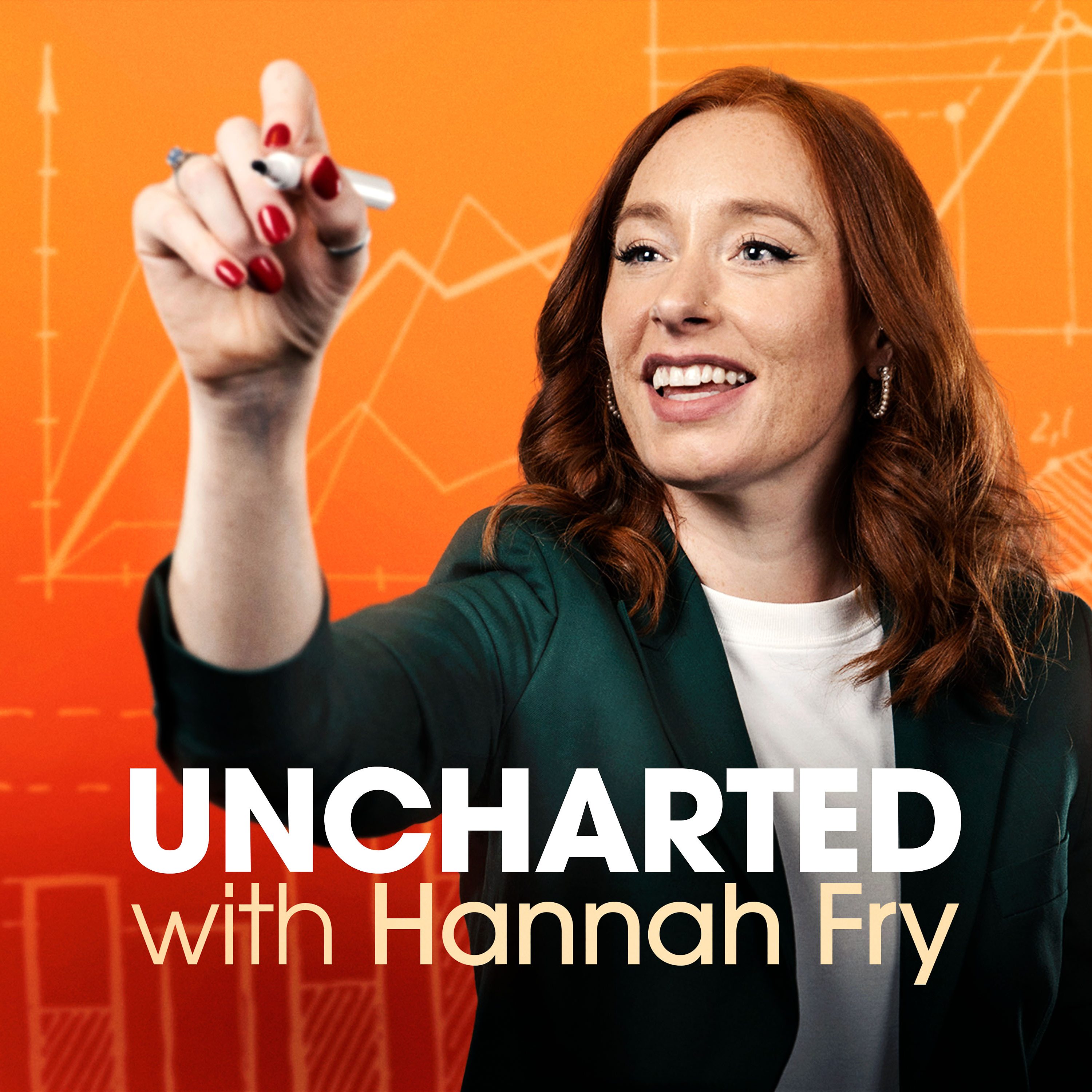
Brian's Run Pod
Welcome to Brian's Run Pod, the podcast where we lace up our running shoes and explore the exhilarating world of running. Whether you're a seasoned marathoner, a casual jogger, or just thinking about taking your first stride, this podcast is your ultimate companion on your running journey.
Join us as we dive deep into the sport of running, covering everything from training tips and race strategies to personal stories and inspiring interviews with runners from all walks of life. Whether you're looking to improve your race times, stay motivated, or simply enjoy the therapeutic rhythm of running, Brian's Run Pod has something for every runner.
Brian's Run Pod
Virtual Racing Adventures and Unconventional Run Challenges
Prepare to be captivated by some of the most unique and eccentric running events from around the globe. From the Man vs Horse race in Wales to the glow-in-the-dark 5K Electric Run and the inflatable obstacles of the 5K Foam Festival, we'll explore events that go beyond traditional races to offer thrilling alternatives. Plus, discover how popular virtual racing platforms like Strava, RunKeeper, and Nike Plus have kept the running community motivated and connected, especially during the pandemic. Join me, Brian Patterson, for a journey that promises to inspire you to find new and exciting ways to stay active and engaged in your fitness journey.
Plus, we continue our series of looking at Olympic Running Events in this Olympic year.
Brian's Run Pod has become interactive with the audience. If you look at the top of the Episode description tap on "Send us a Text Message". You can tell me what you think of the episode or alternatively what you would like covered. If your lucky I might even read them out on the podcast.
Instagram
So you're thinking about running but not sure how to take the first step. My name is Brian Patterson and I'm here to help. Welcome to Brian's Rompod, welcome back to Brian's RunPod, and it's me, your host, brian Patterson, talking to you about all things running. On today's show, we're talking about virtual racing, the rise of virtual racing, creative running challenges, popular platforms like Strava and RunKeeper. Also, what are the benefits of virtual racing, plus how to get involved? I'll also include links in the show notes to everything that I've talked about today, and I'm also going to continue our look at running events in the Olympics.
Speaker 1:The rise of virtual racing. Now the internet has given us some enormous benefits but, at the same time, has provided us with some things that we have to be wary of. Now the internet has given us some enormous benefits but, at the same time, has provided us with some things that we have to be wary of. Now the benefit to runners has meant that we're becoming more and more connected to different communities all over the world. I mean, I grew up without the internet and no new form of communication was limited to the telephone, telegrams and the post, and I can even remember being huddled around the telephone at Christmas time waiting to talk to my relatives in Nicaragua. Now I do digress a little bit from the purpose of the podcast and I just wanted to paint a picture of how, with the advances of technology in the last 20 years, we don't have to wait for the next local race to see how we can feed our competitive juices, for the next local race to see how we can feed our competitive juices. In an article in the Guardian said, a race without time constraints, other runners or even a set route might seem a little bit pointless, but then again, perhaps lack of competition and the emphasis on meeting your own goals is the perfect antidote to starting line jitters, portable toilets and the bellow of to the right as you get lapped again.
Speaker 1:The rise in popularity of the virtual race suggests that lots of us are loving the slower, calmer alternative. There are numerous companies and not-for-profit organisations offering virtual running experiences and while the details vary, the concept is the same Pay money, run the distance whenever, wherever you feel like it, and get the medal in the post. While some organisers demand that the run is completed within a certain week or month and require a photo or an app of a screenshot as proof, others are more relaxed and work on trust. They don't even insist you run the distance in one go, allowing you to break it up and as many runs, jogs or walks as you need. Now we're going to be looking at a segment where we're looking at basically creative running challenges which basically, will keep things a little bit more interesting. Now we will look at virtual running in a little bit more interesting. Now we will look at virtual running in a little bit more detail later on, but I thought we'd look at some of the creative ranging challenges which we have, like, for instance, streak running.
Speaker 1:Well, you'd be pleased to know, it has nothing to do with running naked and according to an article in Runner's World and I will include links in the show notes the run streak is simply a means of running on consecutive days for a set distance without fail. The rules are simple run at least one mile every single day on either the roads, track, hill, dale, or even on treadmill, and your run streak can be for as many weeks, months or, for the exceptionally committed runner, forever. According to Street Runners International Inc, one of the two official streak bodies, the other being in the United States Running Streak Association, some people have exceeded five decades of streaking. Atop the UK active run streak list is Jim Taylor, 68, who run his run streak in 1993 and has a current streak of 10,969 days. That's over 30 years of daily runs. While people like Gary McGee, who ran a marathon every day for a year, and TikTok running sensation Savannah Mukeshi, who has been documenting her journey of 589 consecutive days of running on both social media and Strava, have undoubtedly also made run streaking more popular, inspiring others to set a new year goal and stick to it.
Speaker 1:While it's fine to train every day, recovery is key and it's important to make sure you don't put too much pressure on any one part of the body. Slesley Cantwell, clinical director of Six Physio, running continually loads the joints and bones in the same way every day without giving you then a respite. So Cantwell also suggests supplementing your run streak with strength and conditioning work to avoid injury. Running small amounts, such as a mile a day, can be good for your health, but it's important to keep your runs varied as much as you can and make sure you are supporting the running aspect with strength and conditioning work, as I said, to avoid injury. Rest days are an integral part and aspect of running and, unless you're an athlete, running on a consecutive days can be pretty tough going. As well as a body needing a reduction in training, known as drop down weeks, during a training cycle, it also needs time to recover within weekly micro cycles, says uk athletics endurance coach, helen gaunt, the time the body is allowed to rest when it repairs and strengthens ready to build to the next level, or there is a risk of plateau. So rest and recovery is just as important as training.
Speaker 1:In an article written by Emily Emmons, the editor of Men's Health, she says that she completed a thousand days running streak. Her conclusions were so there it is, after more than two and a half years of running every day feeling poorly, hungover, exhausted or too busy. I completed a thousand days and openly admit that although the running gets a little easier, it still gets boring. I still avoid putting on my trainers and I haven't really got any faster. People cleverer than me I'm sure we'll be able to explain much more coherently why. No rest days doesn't include PBs, but most days when I tick another run off the calendar, a paper one, and she says she's old school, I still feel like I've achieved something. I try to see it as an example that you can always find a half hour in the day to get some fresh air, take a quick snap of the sunrise or dodge the few puddles to reconnect with some kind of purpose. There's also these what's called themed running challenges, which I found. Now, if you're becoming bored with the standard running training and completing the same type of events like 5k, 10k or even marathons events, then perhaps you should consider an alternative from racing a horse to running away from zombies.
Speaker 1:There are plenty of unusual, quirky races out there for you to make the most of, and here is a pick of the 12 best themed races around the world which are guaranteed to put the enjoyment back into your running. There's the colour run. During the colour run, participants are covered in different coloured paint at each mile of the course. Founded in 2011, the event takes place in countries all over the world, encouraging runners of all ages and abilities to take part in this unique celebration. The essence the of this event is to celebrate the happiness of running, promote health benefits of the sport and celebrate individuality. There are no timers on the course, as organizers encourages encourage participants to have fun, enjoy the experience, and those running in the event wear white clothes to avoid the full novelty of the colour and to cross the finishing line looking like they've run through a rainbow.
Speaker 1:Now, I particularly like this one. It's called Zombie Runs. The world has been hit by a zombie apocalypse, but at least for these 5K running events it has anyway To make it out alive. You must complete a challenge of 5k obstacle course and dodge impending flesh-eating zombies along the way. Ignite your fight or flight response and test your nerve, skill and running capabilities in this eccentric challenge. Runners begin the course with three flags attached to their belt, and these act as lives during the race, and it is the zombies job to try and remove them from the participants. Runners aim to finish the race with at least one of the lives still attached to their belt. Should you lose all your lives, you can still finish the 5k, but you won't qualify for a survivor's medal because, unfortunately, zombie zombies will have infected you. The adrenaline filled experience is something to try if you're looking for something out of your comfort zone, and I've included a link in the show notes to a website called the Jungle.
Speaker 1:Then there's the Antarctic Ice Marathon, with the average temperature of minus 20 degrees Celsius, altitude of 700 metres and a small matter of running a marathon in the snow and ice of 700 metres and the small matter of running a marathon in the snow and ice. The Antarctic Ice Marathon is not for the faint-hearted, and only a limited number of competitors can take part a year in the southernmost marathon on earth. And for those looking to join the exclusive Seven Continents Marathon Club, completing the Antarctic Ice Marathon ticks off the seventh continent in style. There's another one called the Empire State Building Run-Up. Now, this is a tough race. It is one of the most famous tower races. The Empire State Building Run-Up sees participants take on New York's tallest building and run up all of 1,576 stairs in the fastest time possible To ascend the Empire State Building in an effort to take us around one minute. Running the 86 flights of stairs takes the fastest runners around 10 minutes, and the annual event began in 1978 and only a few hundred people are selected to run each year.
Speaker 1:Now this other one is, I did say, called man vs Horse In, arguably one of the most bizarre running events in the world annual man vs Horse events. These participants pit themselves against horses, and the event first came about as a result of a pub bet by two men who were drinking in the landlord Gordon Green's pub, and one of the men assured his friend that the man was capable of outrunning a horse over long distances. Green decided to put his punter's argument to the test, and so the man versus horse race was born, now run in the small Welsh town I won't pronounce the name, I can't and it took 25 years for the man's argument to be proven correct. In 2004, hugh Lobb won the event and I wonder if that event is still going.
Speaker 1:There are many others. There's the Walt Disney World Marathon weekend. There's the electric run, and if you had enough of running in the daylight, then sign up for the eccentric glow-in-the-dark 5k electric run Run in the dark. The event incorporates lights, music, youthy costumes, one of a kind after party that feels more like a festival than a post-race celebration. There's the Krispy Kreme Challenge, wife Carrying Championships, sonderhausen Marathon. There's the Burrow Days World Championship. This is about guiding a donkey along a course. You're not allowed to whip or ride the donkey at any point in the quest to getting the donkey to complete the course. There's the 5K Foam Festival. The 5K Foam Festival is a course filled with inflatable obstacles, mud and foam. The 5k foam festival is a course filled with inflatable obstacles, mud and foam, and the primary aim of the festival is for participants to have fun. The event is family friendly and usually comprises of 16 and 25 obstacles to make up the course over a distance of around 5k. The event is a great challenge for those looking to try something a little different.
Speaker 1:Now, I know we were talking about virtual racing, but I thought I'd include this segment about different types of racing if you just wanted something a little bit out of your comfort zone. Now I will talk about, kind of, some of the popular platforms we have. I may have covered this before in a previous podcast, but I thought it'd be good looking again in this context. So you've got Strava, which is a fantastic app which tracks physical exercise and incorporates social networking features brilliant community app. It started out as a tracking mostly outdoor cycling and running activities using GPS, but now incorporates several dozen other exercise types, including indoor activities. And if you look up virtual running in Strava, there are loads of events.
Speaker 1:You can enter RunKeeper, which I know I've talked about earlier on and last year RunKeeper app has lots of bells and whistles, both straightforward, easily. Tracking will always be a core feature. I think it was. I think it started up in canada, I can't be sure designed for serious and casual runners alike. Use of gps mode to track all your activity outdoor activities like running, trail walking, even cycling more focused on indoor workouts you stop much road, stop much. Mode to track all your stationary workouts, like spinning, yoga or treadmill running. With extensive list of activities, you can keep track of everything, and that gets your blood pumping.
Speaker 1:With more and more races creating virtual race options, there's never been an easier time to start racing. With the RunKeeper app, you can even register for virtual races and track them straight from the app. You can even access the leaderboard afterwards to see how you did and find races for your area in the Explore tab to start racing. Nike Plus one of the first apps to track your running on the iPhone.
Speaker 1:In an article written by Nikecom in the middle of the pandemic, they gave reasons as to how it shot up in popularity as race after race got cancelled in the year 2020, something interesting started to happen. Rather than abandoning their training, many runners began to plan their own races or sign up for a virtual one in honour of a scheduled event. In fact, about 30% of runners who had registered for a live race or switched up to a virtual race, says Jeff Matlow, the CEO of Running USA. Some virtual runs are seeing up to 50,000 people signing up, while prior to 2020, a huge turnout would have been about 15,000. And this is in the US, so still only 7% of people still feel that completing a virtual race, where you sign up online to run a certain distance, then do it in your own time, is the same as finishing an actual, organised one.
Speaker 1:According to running usa's 2020 national running survey and let's be honest, it's it's, it's, it's not. The difference is less than about the race programming. Most running apps, including the nike run club, can help you map out your and the real challenge is how do you stay motivated and on your game when you no longer have camaraderie or cheerleaders or competition to keep you going In an effort to put the effort in? You can find a new type of inspiration from a virtual race, says Lenny Waite PhD. Find a new type of inspiration from a virtual race, says Lenny Waite PhD, a certified mental performance consultant and Olympian who recently completed her first one. You're the race director and the participant, she says. I think these are key things. That sense of control could boost your running performance. Nike running global head of coach, chris Bennett, agrees You're not limited to the rules of someone else's race. You're making your own rules for the race, he says. In a lot of ways that can be quite liberating.
Speaker 1:Now let's look at the benefits of virtual races and challenges. Well, location, location, location. With a virtual, virtual challenge, it doesn't matter where you complete it, as long as you do it within the time frame. Gone are the days of using travel as an excuse to knock to exercise, completing at your pace as long as you reach your mile go, but mile go by the mile goal by the end of the month. It doesn't matter how fast or slow you go. You can, quite literally, race at your pace. Account for your ability and set your pace at whatever works for you. Don't push yourself too hard and risk injury yourself. You have plenty of time to reach your goal. Equally, set a tough target and you'll be more obliged to get out on the days when you lack motivation, exercise wherever to test the rush to make your gym class straight after work, can't get child care when you're while you're at a running club or simply prefer to do your own thing.
Speaker 1:Virtual challenges give you the freedom to exercise whenever it suits you. Involve others. Virtual challenges are affordable and accessible to pretty much anyone, so why not get a friend to join you, or friends? Exercising with a friend can elevate a boring workout or to a giggle-filled catch-up. While you both rack up the miles On tough days, your friend can help motivate you to get out and active, especially if you are particularly competitive and want to beat those record times. Make your virtual challenge a family ordeal and get your kids involved. Race at your Pace offers smaller kids challenges to encourage the whole family to get fit. You never know, going for a picturesque walk may become a family favourite Weekend activity. There's flexible scared of committing to something.
Speaker 1:Because you lead a very unpredictable and hectic life, virtual challenges are for you. If you need to take the day off or two off off, you can improve your fitness regardless of what life throws at you. Additionally, if you won't be able to reach your goal due to the ability or injury, you can change your goal, as long as you do it in time. This way, you still get the shiny medal at the end without pushing yourself to an unrealistic target, and and in the final and probably the best benefit I feel is that the benefit of virtual challenges is that they are incredibly motivating. Everybody knows that exercise is good for them, and that doesn't mean everyone is active. Virtual challenges help make exercising less intimidating by breaking up achievable goals into chunks with the promise of a prize. Knowing that you're working towards a shiny medal encourages even the most reluctant to get moving. Also, it's a great achievement to be able to gloat to your friends about it.
Speaker 1:How do you get involved? I've included a link to a website called Virtual Runner UK and I'm sure wherever you are in the world, there may be similar types of websites that offer virtual running, so you can browse as to when you want to do the challenge, the race distance, if you want to do a multi-sport event, even let you know how much time is left to enter. And this is just one resource and, as I said, I'm sure Strava or any other popular running apps there's so much resources out there online and now it is that time of the programme We'll be looking at an Olympic runningic running event. But anyway, that's it about virtual racing, and I will be covering another topic in next week on brian's run pod. Well, as we're going to continue our series about Olympic running events.
Speaker 1:Well, this week we're looking at the 10,000 metres at the Summer Olympics. It's the longest track of a running event held at the multi-sport event. The men's 10,000 metres has been present on the Olympic athletics programme since 1912. The women's event was added to the programme over 70 years later, at the 1988 Olympics. It is the most prestigious 10,000 meters race at elite level. The competition format is a straight final between around 30 athletes, although prior to the 2004, a qualifying round was held. The Olympic records for the event were both set by Ethiopians in the 2008 Beijing Olympics and the 2016 Rio Olympics by Kinesia. Bekele set the men's record of 27 minutes one second 1.17 minutes, while Almaza Ayana set the women's mark at 29 minutes 17.45. At 10 000 meters, world record has been broken at the olympics on two occasions lassie viren winning the time in 27, 27 minutes 38.35 in 1972, and that stood as a record for less than a year. And Almaz Ayana knocked 14 seconds off the women's record in 2016.
Speaker 1:Six men have won the Olympic title twice Pavel Nurmi became the first in 1928 and he was followed by the Czech runner Emil Zadekpek. Lassi Viren, halle Gabrys, lassi, knise Bekele and Mo Farah have also won the 10,000m title. Twice. Two women have achieved that feat. Derartu Tulu won her second title in 2004 and Tarunesh Tarnesha Dibadba had back-to-back wins in 2008 and 2012. Derata Tulu is the only athlete to have reached the podium on three occasions.
Speaker 1:Historically, athletes in this event have also had success in the 5,000 meters at the Olympics. The winner of the men's Olympic 10,000 meters has completed a long distance track double on nine occasions, the most recent being Mo Farah from Great Britain at the 2016 Rio Olympics. Rio Olympics, tarunesh Dibaba and Sifan Hassan are the only women to complete the stable at the 2008 Beijing Olympics and the 2020 Tokyo Olympics, which was held in 2021. At the 2016 Rio Olympics, almas Ayana smashed the world record in the time of 29.17.45. It was the first time four women broke 30 minutes in a single race.
Speaker 1:Ethiopia is the most successful nation in the event, with 10 gold medals among its 24. In the event, finland is the next most successful, with six gold medals and 13 overall. Finland's period of great success in the early 20th century led to wide-walled usage of the nickname Flying Things of Carlo Manica, who was the last Finnish athlete to medal in over 10,000 metres in 1980. Kenya has won 11 medals, although Natavila Temu is the only Kenyan to have won Olympic gold, and I'd just like to say at this stage I do apologise if I have spelt or pronounced the names of people incorrectly. Anyway, that was a look at the 10,000 metres at the Olympics and I look forward to telling you about another running event next week on the podcast. Thank you,
Podcasts we love
Check out these other fine podcasts recommended by us, not an algorithm.

Life Changing
BBC Radio 4
Tech Life
BBC World Service
Runner's World Podcast
Runner's World UK
Buzzcast
Buzzsprout
Newscast
BBC News
Understand
BBC Radio 4
Cyber Hack
BBC World Service
Ghost Story
Wondery | Pineapple Street StudiosDiz Runs Radio: Running, Life, & Everything In Between
Join Denny Krahe, AKA Diz, as he talks with a variety of runners about running, life, and everything in between.
Uncharted with Hannah Fry
BBC Radio 4
The Global Story
BBC World Service
The Coming Storm
BBC Radio 4
Lives Less Ordinary
BBC World Service
Do Epic Shit Today Podcast
Hannah Mulhern
The Rest Is History
Goalhanger
